Rosie Set to Ride Boeing Starliner Atop an New Atlas V N-2-2 Configuration
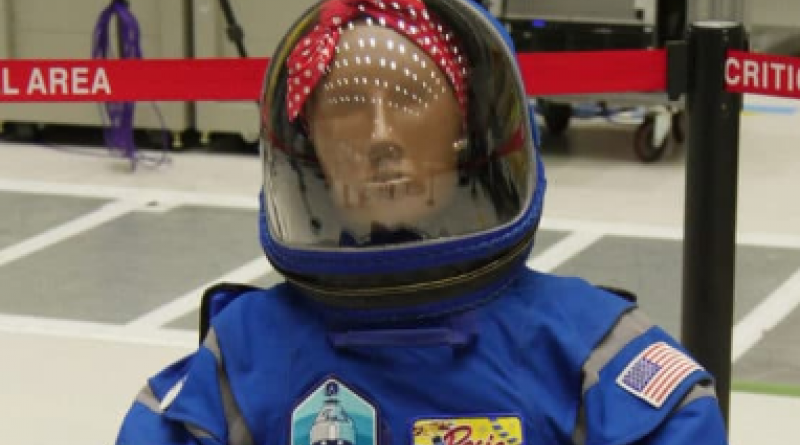
CAPE CANAVERAL AIR FORCE STATION: Rosie the Rocketeer, an anthropometric test device is strapped in to the Boeing Starliner capsule atop an Atlas V rocket at Cape Canaveral's Space Launch Complex 41. She is set to launch to the International Space Station at 6:36 AM on Friday December 20, 2019 for the Orbital Flight Test (OFT) mission.
The Atlas V is flying in a new configuration designed for Boeing. Usually, an Atlas will fly in a configuration such as 5-2-1 which means a 5-meter fairing, 2 strap-on booster rockets, and 1 Centaur upper stage motor. In 80 previous launches of the Atlas-V, there have been plenty of configurations, but none have flown without 2 Centaur Upper Stage motors. The N-2-1 configuration represents No fairing, 2 strap-on booster rockets, and 2 Centaur upper stage motors.
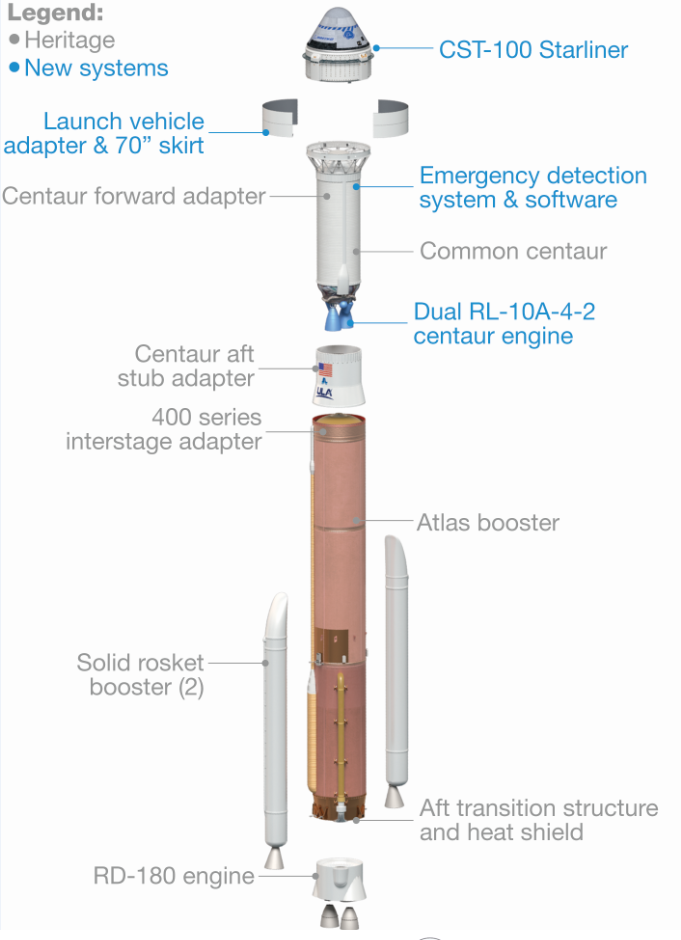
- Ascent cover is for aerodynamic support on launch. It pops off after booster engine cut-off
- The Forward Heat Shield protects the parachute systems until the capsule leaves the atmosphere
- The Crew Module is where the crew sits. It has a series of smaller attitude-control thrusters.
- The Base Heat Shield is new technology made of Boeing lightweight ablater. It is 30% lighter than any other heatshield and is proprietary to Boeing.
- The Service Module does three main things: Propulsion, 48 OMAC and RCS thrusters (OMAC = Orbital Maneuvering & Attitude Control. RCS = Reaction Control System). The OMACs have 1600 pounds of force and the RCS have 85 pound of force.
- The Launch Abort Engines will only be used on the pad and in the low phases of flight. Once the rockets gets into the upper atmosphere, any abort would be handled by the OMACS.
- Below the Service Module are the solar arrays. Note that unlike Soyuz, the solar array does not pop out. Once Starliner is on orbit, if they have to charge the batteries, Boeing does a tail-Sun maneuver, pointing the bottom of the spacecraft towards the sun. This removes complexity."
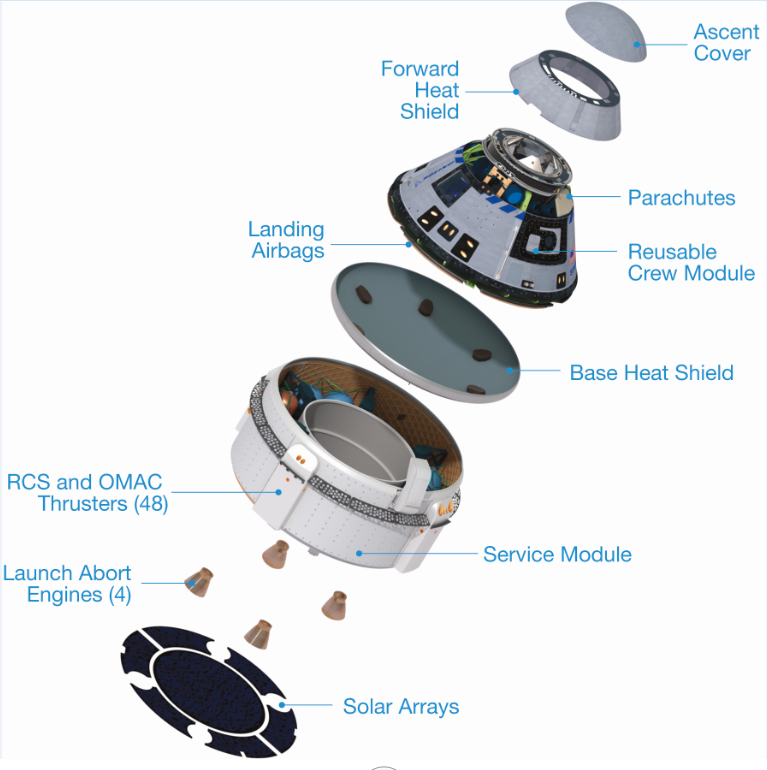
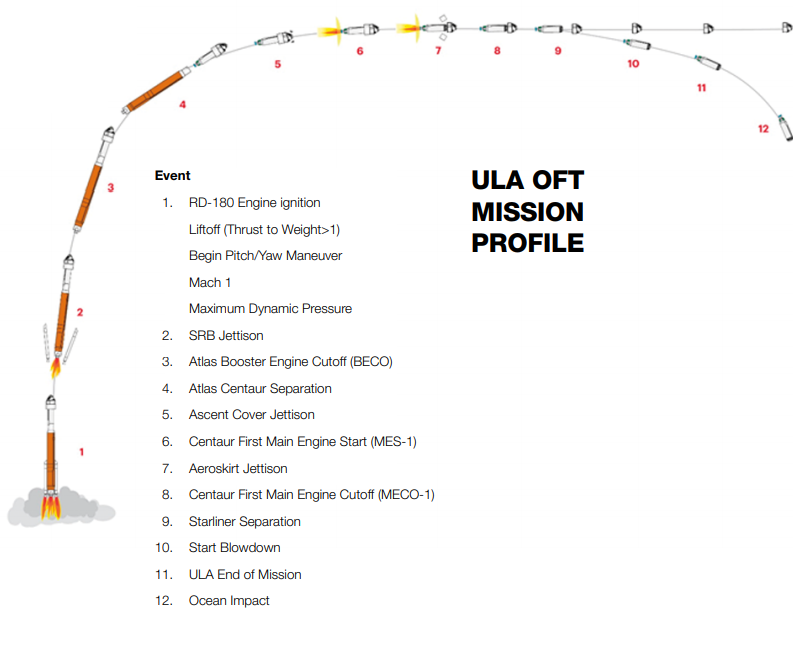
Rosie the Astronaut
Rosie the astronaut is the first official passenger aboard the CST-100 Starliner. An anthropometric test device, Rosie will be sitting in the commander's seat. She'll be equipped with hundreds of sensors that will return critical data to the Starliner team ahead of the first crewed flight. They'll observe the forces that Rosie experiences through launch, ascent, re-entry, and landing. "One of the most recognizable and famous icons of both World War II and Boeing is Rosie the Riveteer - a persona proudly adopted by millions of women who, driven by a patriotic spirit, took jobs at shipyards, armament factories and aircraft companies. Today, Rosie is a symbol of not only the women who are blazing a trail in human spaceflight history, but also of everyone who has shown grit and determination while working tirelessly to ensure the Starliner can transport astronauts safely to and from the International Space Station."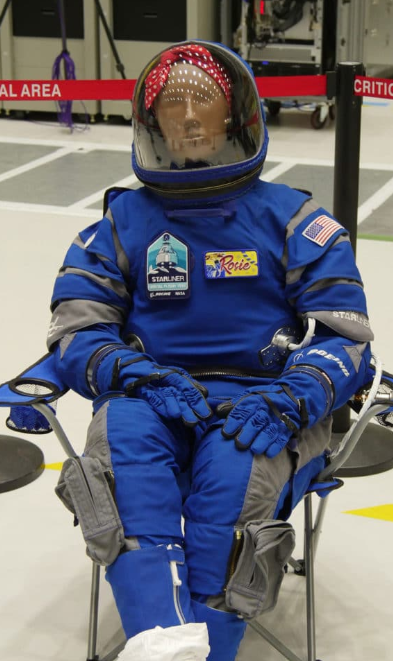
Souvenirs Aboard OFT
The practice of carrying items aboard a spacecraft with the purpose of becoming meaningful souvenirs goes back to the early days of the space program. Gus Grissom took a roll of coins with him on his 15-minute suborbital flight in July 1961. In the years that followed, astronauts routinely took small bags of souvenirs with them that became small trophies for friends, family, and colleagues.
Boeing and their suppliers are flying a host of American flags, Starliner coins, and program decals. In addition, some notable souvenirs include:
- Bill Boeing's original ID Card - the identification card is numbered "1" for Bill Boeing and carries his original signature. It was issued to him to use to board any flight by United Airlines. Normally stored in the Boeing Company archives, the ID card will travel inside the Starliner.
- Starliner Space Seedlings - In 1971, astronaut Stu Roosa took 500 seeds from five different species of trees around the Moon with him on Apollo 14. There were 100 seeds each of loblolly pine, sycamore, sweetgum, redwood and Douglas fir. When the seeds were brought back to Earth, the U.S. Forest Service germinated them and sent that around the country to be planted, eventually becoming "moon trees". The Starliner will carry the same mix of seeds on this flight. When they return, they will be distributed to Boeing sites, suppliers, and other stakeholders across the country, growing the first generation of Starliner trees.
- Silver Snoopy Pins - the revered symbol of safety in human spaceflight, dozens of Silver Snoopy pins will be packed in the Starliner's cargo bags to orbit the Earth and return. Receiving a Silver Snoopy is one of the preeminent lifetime honors in human spaceflight.
Rendezvous and Docking Scheduled for Saturday
Once in a stable orbit on course for the International Space Station, Starliner begins its rendezvous procedures. Unique to the Orbital Flight Test mission, Starliner will conduct a series of demonstration burns a few hours after launch to prove the spacecraft can maneuver itself safely in space. As Starliner closes on the station, the vehicle’s star tracker cameras will first see the orbiting lab as a distant, but bright, point of light moving in front of a background of fixed stars. Over the next few hours, Starliner will slowly move itself closer to the station and then pause before entering the 200-meter “keep out sphere” until station flight controllers clear it to enter. Starliner then begins the docking process, pausing once more 10 meters away from a Boeing-built International Docking Adapter and then continuing to final approach and docking.
All photos courtesy of Boeing.

Stunning, full color photo book covering every east coast launch spanning 2014-2015, including the first-ever powered landing of a SpaceX Falcon 9 rocket.
More Info



